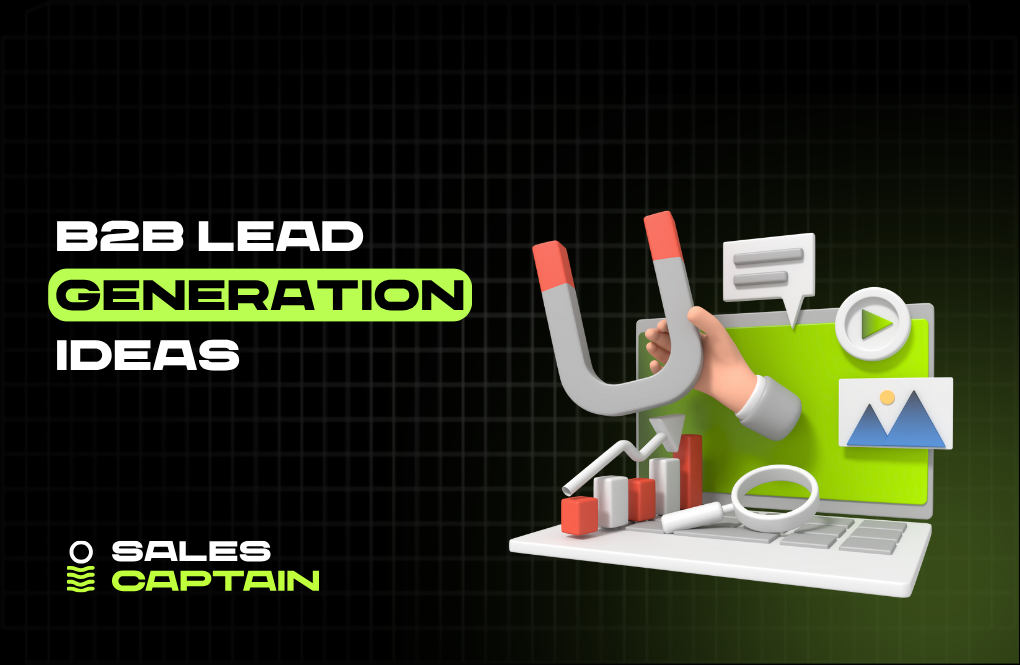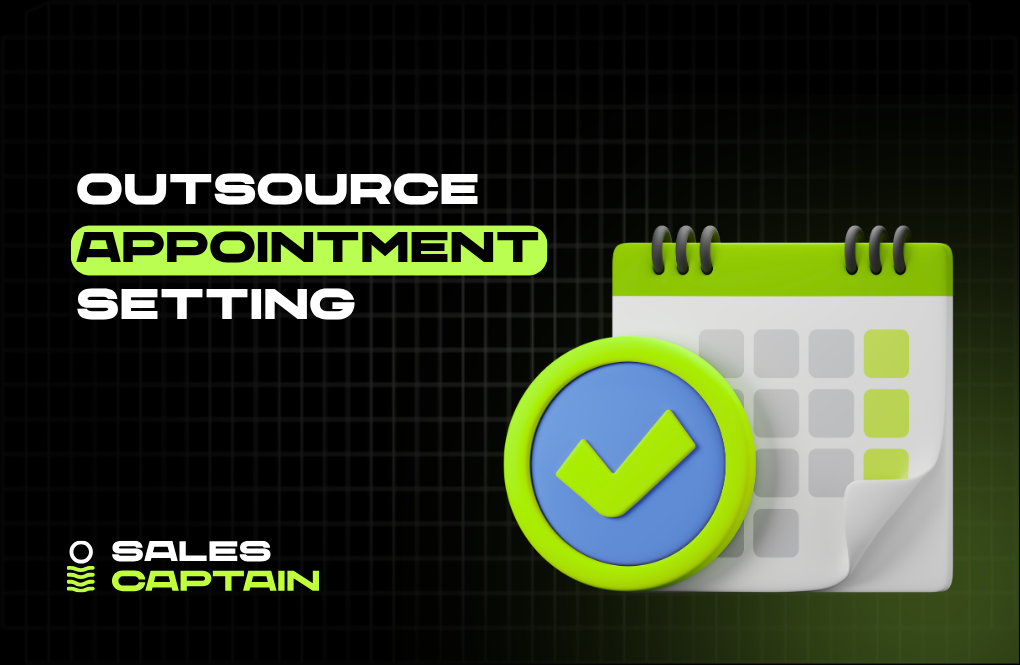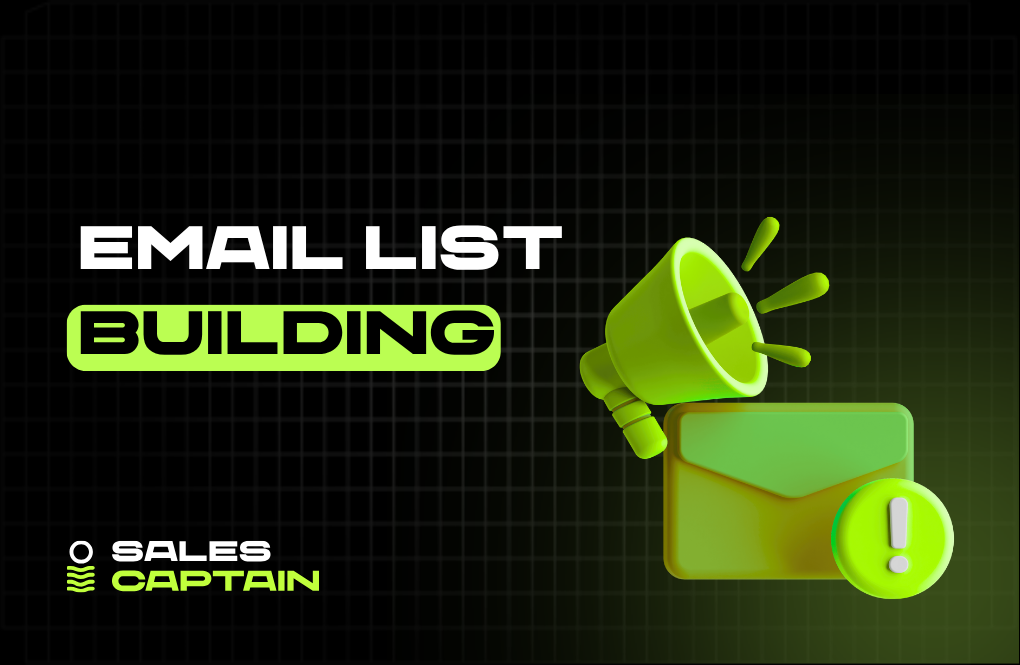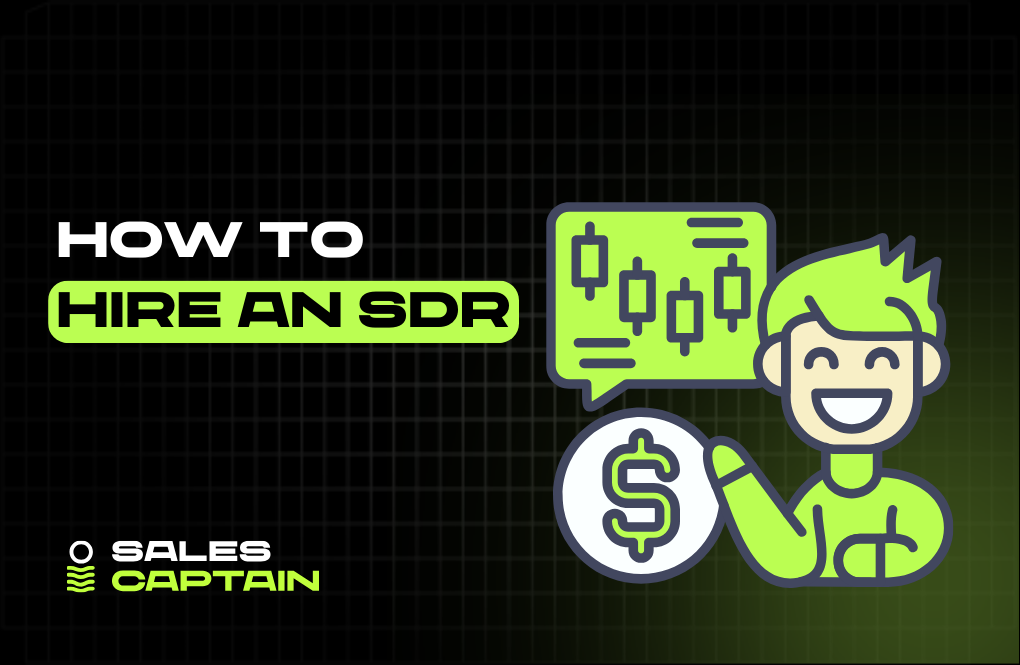

High-Ticket Client Prospecting: The Complete Guide to Closing Premium B2B Deals in 2025

.png)
High-ticket client prospecting isn’t about blasting generic sequences and hoping someone books a call. It’s a strategic, high-precision game where one deal can transform your entire revenue line. If you want to land bigger contracts, sell deeper value, and build long-term enterprise relationships, you need a prospecting system designed for $10K–$100K deals, not $29-a-month SaaS trials. This guide breaks down exactly how to attract, engage, and close high-ticket buyers using modern outbound, AI-powered targeting, and proven GTM frameworks.
What Are High-Ticket Clients?
Defining High-Ticket Clients
High-ticket clients are buyers who generate significant revenue per sale. We're talking thousands to tens of thousands. One deal moves the needle. This isn’t about selling SaaS at $29 a month. It’s B2B retainers, enterprise contracts, multi-location deals, or high-margin products, anything with serious deal size and long-term potential.
But it’s not just about price tags. High-ticket clients usually come with complex buying processes, multiple stakeholders, and longer sales cycles. While the upside is higher, the outbound motion must be sharper. Your messaging has to pierce deeper. No one impulse-buys a $50K consulting package.
Key Characteristics of High-Ticket Clients
High-ticket clients tend to behave differently from mid-market buyers. Here’s what sets them apart:
- They buy outcomes, not features. They’re not impressed by specs; they want business transformation.
- They care about authority. Who you are and why you’re credible matter more than what you're selling.
- They require trust across the buying committee. Multiple people will need to say “yes”, from finance to operations to leadership.
- They expect a premium experience from the first cold email to the final contract.
- Budget is available, but only for aligned value. High-ticket buyers will pay, but only if the ROI is clear and immediate.
This means your outreach can’t be spray-and-pray. You’ll need sharp targeting, tight positioning, and trust-building baked into your GTM funnel.
Why Focus on High-Ticket Prospecting?

Benefits of High-Ticket Clients for Your Business
Not all revenue is created equal. High-ticket clients don’t just improve your top line,;they build business stability:
- Fewer deals, greater impact. You can hit goals with 10 clients instead of chasing 1,000 low-value conversions.
- Stronger LTV. High-ticket clients will often stay longer, upgrade more, and grow with you.
- Predictable growth. One successful deal often leads to internal referrals or expanded scopes.
- Easier ops scaling. High-touch clients are easier to service than high-volume churn factories.
In short: when your base is made of whales, you stop sweating the small fish.
The Profitability of High-Ticket Sales
High-ticket deals aren’t just bigger, they’re more efficient when you zoom out.
The outbound cost per acquisition might be higher upfront, but the margin per customer makes up for it. Once GTM systems are in place, think automation, scoring, conversion loops, and the CAC efficiency multiplies fast.
Plus, opportunity stacking is real. That $40K contract could expand to $100K if you land and expand. That first client testimonial could bring in three more. It’s a compounding engine, not a hamster wheel.
And here's the kicker: outbound has never been more powerful for high-ticket sales. With AI and tools like Clay, your ops team can source, score, and sequence highly-targeted prospects at scale, without burning SDR hours.
Who Is Your Ideal High-Ticket Client?
Identifying Your Target Audience
Most teams skip this step and spray the market with cold emails. Don’t. High-ticket prospecting only works when you know who actually buys and why.
You’re not just targeting industries. You’re targeting roles, responsibilities, problems, and urgency signals.
Start here:
- Industry verticals that feel the pain your offer solves.
- Decision-makers with buying power and an incentive to move fast.
- Companies in a specific size range, funding stage, or tech environment.
- Account signals, hiring patterns, tech stack, PR coverage, and intent data.
This is where data-driven outbound flips the game. You’re not guessing. You’re chasing real-time buyer signals.
Building a Customer Avatar
A good customer avatar isn’t a generic persona slide. It’s a living document built from deal data, support tickets, email replies, and actual conversations.
Here’s what to include:
- Title, role, and daily priorities.
- KPIs they’re trying to hit.
- What keeps them stuck?
- What words do they use to describe their pain (not your jargon)?
- Trigger events that signal readiness to buy.
Done right, this becomes your entire GTM north star. Offer positioning, subject lines, cold call scripts, it all flows from here.
Pro tip: build your ICP as a multi-dimensional filter inside Clay, combining firmographics with intent data and triggers. It’s like targeting with superpowers.
How To Create a Compelling High-Ticket Offer?
Defining Value-Based Pricing
High-ticket pricing can’t be cost-plus. No CFO signs off on $100K because it took you 200 hours to build. They sign off because your offer brings $1M in returns, or prevents a $500K loss.
That’s value-based pricing. It’s not priced on effort. It’s priced on business impact.
To do it right, reverse-engineer outcomes:
- What change do you create?
- What’s the financial upside of success?
- What’s the cost of inaction?
Once you attach your offer to real business impact, price becomes a function of ROI, not overhead.
Packaging Your Offer Effectively
A high-ticket offer is more than a service list. It’s a transformation, clearly packaged.
Here’s what that means:
- Give your offer a clear name. “Growth Accelerator Program” beats “6 hours of consulting.”
- Build tiered packages so prospects have a comparison point and path to upgrade.
- Show the inputs, yes, but lead with outcomes. Frame it around what clients gain, solve, or become.
- Bake in bonuses, onboarding, or guarantees that reduce risk and boost perceived value.
It’s all psychology. The more friction you remove, the closer they move to signing.
Plug this back into your outbound: if your offer isn’t clear, your emails won’t convert. Fix the foundation first.
What Strategies Work for High-Ticket Prospecting?

Leveraging LinkedIn for Outreach
LinkedIn isn’t just for posting thought leadership. It’s your high-ticket acquisition engine when used right.
It starts with visibility. Build a profile that radiates credibility and expertise. Then start outbound:
- Connect with relevance. Custom connection notes based on mutual context or trigger events.
- Start warm. Engage with their posts, comment thoughtfully, and respond to stories. Build trust before pitching.
- Then go cold. But not generic. Lead with insight. Use events, pain points, or strategic shifts to spark the message.
AI tools can help here, but the message must feel handcrafted. Especially in high-ticket spaces. The CEO can smell spray-and-pray from a mile away.
How to use Clay for LinkedIn targeting:
Use Clay to auto-source ICP LinkedIn profiles based on layered filters: funding stage, tech stack, location, team size, and recent activity. Then enrich with contact data and drop into targeted outreach flows. If you sign up using this link, you’ll get 3,000 free credits: Clay
Networking Events to Connect with Prospects
Zoom fatigue is real. In-person still wins when trust matters most, and high-ticket deals are built on trust.
Target high-caliber events where your buyers go to solve problems, not just mingle. Industry-specific summits, niche conferences, partner-led dinners.
Don’t pitch. Show up ready to listen, talk upstream strategy, and spark curiosity.
One great conversation can replace hundreds of cold messages.
Sales teams should treat events like outbound plays, pre-research attendees, book pre-event meetings, and follow up fast. Use the event as a trigger, not a standalone tactic.
Exclusive Webinars and Workshops
Webinars are dead. But curated, invite-only workshops? Different league.
The key is positioning. Don’t teach. Solve. Don’t run a slide deck, create a dialogue. Make the event feel like it’s only for senior operators solving shared problems.
This becomes:
- Top-of-funnel awareness for passive buyers.
- Trust builder with active pipeline deals.
- Content engine for repurposing towards future outreach.
Bonus: you control the narrative. No ads, no noise, just highly-relevant content with a short path to pitch.
Pro tip: Cold outreach agencies like SalesCaptain often use private workshops to warm up high-ticket leads before the demo. It’s a powerful blend of marketing and sales. GTM as a system.
How To Use Content Marketing to Attract Clients?
High-ticket buyers don’t surf Google looking for vendors. They look for proof. That you understand their world, speak their language, and can solve problems above the surface.
That’s why content isn’t just for inbound anymore, it’s part of outbound. The right piece? It earns trust before a single pitch.
Creating Value-Driven Content
High-ticket leads aren’t looking to be entertained. They want a signal. Something specific, strategic, and real.
Your blog, LinkedIn posts, and video snippets should mirror the questions execs are already asking:
- “How are other companies solving this?”
- “What’s the real cost of ignoring this pain?”
- “What steps should my team take next?”
If every piece of content gets them one step closer to clarity, you win. You show expertise without asking for anything up front.
And format matters. A LinkedIn carousel that breaks down a client growth play will beat a 2,000-word SEO post every time, if it’s sharp. Especially in outbound sequences, tight content signals relevance fast.
Utilizing Case Studies and Testimonials
Nothing kills doubt like proof. But most case studies are boring resumes.
Real ones tell a story:
- Starting point (pain)
- Strategy (what you actually did)
- Outcome (quantified, not vague)
- Quote (pulled directly from the client’s Slack or Zoom call)
The more niche the case, the better. If your outbound email says, “We helped [similar company] increase SQLs by 42%,” your prospect is now listening.
Use testimonials the same way. Not plastered on your homepage. Use that VP quote inside an email to a similar-role lead. Context makes it hit harder.
Crafting Educational Resources
Education doesn’t mean “ebook.” That era’s dead.
Think:
- Internal decks turned into teardown guides.
- Loom videos explaining your strategy frameworks.
- Private Notion docs walking through growth models.
Make them ungated. Share pieces in cold outreach. Let your dream buyers feel like they got insider playbooks, not marketing fluff.
If every educational resource you ship deepens credibility, it becomes your silent SDR.
What Role Does Personalization Play in Prospecting?
"Mass personalized" doesn't cut it with high-ticket deals.
These buyers don’t just want relevance. They expect it. If your message feels like they’re #47 in a sequence, it’s over.
Real personalization isn’t just [first_name]. It’s speaking directly to their team, their problems, and their moment in time.
Tailoring Your Message for Different Segments
Enterprise CFOs care about different metrics than startup founders. Heads of RevOps aren’t thinking like CISOs.
Which means your messaging framework must adapt.
Segment by role, company stage, tech environment, and pain priority. Then tailor:
- Subject lines
- Value props
- Soft calls to action
You’re not just increasing reply rates, you’re showing you’ve done the homework. That alone separates you from 90% of inbox noise.
We’re in a world where everything is scalable. But doing the extra bit of segmentation? That’s what feels boutique.
Using Data to Personalize Outreach
Every great outbound starts with the right signal. That’s where data becomes your outreach unlock.
Trigger events, tech stack changes, churn indicators, funding rounds, every data point is a personalization opportunity. Used right, it turns a cold message into a warm insight.
The trick is workflow. You don’t need SDRs trawling LinkedIn for hours. You need systems.
Hook up tools like Clay to auto-detect role-based buying signals, enrich lead data, and score accounts by relevance. Then drop those into personalized flows based on action triggers.
That’s not just prospecting anymore. That’s technical GTM ops, run like a product team.
How To Nurture Leads into Clients?
Getting a reply doesn’t close the deal. Especially in high-ticket. Interest is just the opening.
The real work is in the middle. Where nuance matters, trust compounds, and timing shifts everything.
That’s where lead nurturing steps in.
The Importance of Follow-Ups
One email rarely does the job. Neither does two.
Buyers are busy. Priorities shift. Timing gets messy. But the prospect who didn’t reply last month might be ready to talk this week, if you stay top of mind.
Great follow-ups don’t just repeat the same CTA. They add value:
- A new case study that mirrors their industry.
- A relevant insight based on their company's recent funding.
- A resource they’d actually forward to their team.
Think of it as micro-trust-building. Each touchpoint earns a bit more credibility until you're the obvious choice when the timing aligns.
No reply? Doesn't mean no interest. Just means not yet.
Building Long-Term Relationships
Not every lead becomes a deal. But every lead is a relationship asset if you play it right.
Especially in high-ticket relationships outlive pipeline stages.
Invite them to a founder circle event. DM them insights they’d value. Share a post where they’re quoted and tag them authentically.
That way, when their priorities change, they come to you.
Outbound isn't just for closing; it’s for designing a network of future buyers. You’re not doing sales. You’re designing serendipity.
What Are Advanced Sales Tactics for High-Ticket Clients?
High-ticket sales aren’t about pushing. They’re about guiding. Your buyer wants a partner, not a pitch.
So the tactics need to match. Less pressure. More precision. More transformation, less transaction.
Consultative Selling Techniques
The best sellers don’t "sell." They problem-solve out loud.
Consultative selling is about stepping into the buyer's business. Asking sharp questions. Reframing assumptions. Identifying the deeper pain under the surface
Instead of “here’s our solution,” lead with:
- “Tell me where this breaks down in your ops today.”
- “What bottlenecks are slowing down your team?”
- “If this works, what changes internally?”
Now the conversation’s strategic. Now you’re no longer a vendor, you’re an internal force multiplier.
At high-ticket levels, that shift matters more than pitch decks ever will.
Handling Objections Before They Arise
Objections don’t kill deals; being surprised by them does.
High-ticket buyers will ask about risk. Budget. Buy-in. Integration time.
A pro solves those before they’re voiced. In your outbound message, on the landing page, during your second call.
You plant the answers inside your story. Like:
- Framing ROI clearly enough that "budget" isn’t a blocker.
- Showing a client quote that handles the same concern they’ll have.
- Offering a pilot or scoped intro before a larger commitment.
Anticipation becomes your best weapon.
Closing with Scarcity and Exclusivity
At the final stretch, logic gets you close. Emotion gets you over the line.
Scarcity isn't about gimmicks. It’s about protecting your time and maintaining offer integrity.
Try:
- “We only take on 4 new clients per quarter.”
- “This scope works if we kick off next month; otherwise, we’d need to rework the timeline.”
- “This audit is part of our beta round. You’d be one of three getting early access.”
Position your offer as something special. A fit, not a sale.
Confidence creates permission. When buyers feel they’re opting into something selective, they chase, on their terms.
How To Ensure Client Retention After Sale?
Closing a high-ticket client is the start, not the end.
Retention doesn’t happen by accident. It’s a system, one that builds trust, delivers outcomes fast, and collects insight to loop back into GTM.
Delivering Exceptional Post-Sale Support
Your onboarding is part of the sales process. Your first 30 days define how long they’ll stay.
That means:
- Fast wins. Show progress in week one, not month three.
- Reactive + proactive. Don’t just fix things, guide them.
- Ownership. A single person they trust, not a rotating account manager wheel.
Clients pay for execution, but they remember the experience.
Retention isn’t about delighting. It’s about removing anxiety. Make them feel rock solid, and they’ll never leave.
Creating a Client Feedback Loop
Retention isn’t static.
Markets shift. Teams grow. What solved the problem three months ago might now be the bottleneck.
That’s why feedback can’t be annual. It has to be baked in.
- End each engagement call with a simple “what’s blocking you now?”
- Run quarterly reviews where you re-scope goals and priorities.
- Turn feedback into outbound signals. If one client hits a new growth stage, others in your list might be next.
GTM is a loop. And feedback isn’t just for CS, it’s insight fuel for your next prospecting sprint.
What Common Mistakes Should You Avoid in High-Ticket Prospecting?
High-ticket deals fall apart for predictable reasons. Not pricing. Not competition. Execution.
It’s rarely one big mistake that kills momentum; it’s a series of small misalignments that erode trust, clarity, or urgency. Here’s where most teams trip.
Misunderstanding Client Needs
This one hides in plain sight.
Sellers assume they understand the client’s problem because they’ve “seen it before.” But high-ticket clients live in complexity. The same surface problem can mean different things depending on team dynamics, internal politics, or platform dependencies.
Guessing doesn’t cut it. You need to interrogate the problem.
Don’t pitch features. Map the pain. Understand:
- What impact is the problem having right now
- Why hasn’t it been solved already
- Which departments are most affected
You can’t personalize an outbound sequence if you’ve anchored to the wrong pain. And once you pitch on the wrong premise, regaining credibility is a mountain.
Neglecting Follow-Up Strategies
Most replies don’t come from the first touch. Or the second. Strong follow-up isn’t desperation. It’s professionalism.
But teams either give up too early or just resend the same pitch with a “Just checking in.” Useless.
High-ticket clients need consultative momentum, not inbox nagging.
Every follow-up should:
- Add signal: new case study, relevant article, recent comment they made
- Spark curiosity: “Noticed [X] changed on your team, does that tweak your priorities?”
- Reflect awareness: show that you’re tracking their timing, not rushing your own
The right follow-up strategy wins more deals than any initial cold email. Because most teams stop early, and high-ticket buyers notice who stays consistent.
Focusing Only on Quick Sales
“Book a demo this week?” works in volume sales. In high-ticket? You just disqualified yourself.
These deals take time. Not because buyers are slow, but because alignment is hard when six execs have to say yes.
Rushed outreach feels transactional. And no one wants to spend $50K on a vendor who’s just trying to hit quota.
Slow it down. Signal that you’re not here to sell fast, you’re here to solve deep.
Instead of “Are you ready to move forward?” ask:
- “Would it be helpful if we mapped the stakeholders so you can build internal alignment?”
- “Want a short memo your CFO can skim before next week’s call?”
Elite sellers play the long game. Transactional energy kills trust. Especially at the top end of the market.
Key Metrics to Track in High-Ticket Sales
Surveys and open rates don’t cut it here. High-ticket sales rely on fewer actions, but they need to be airtight.
To optimize GTM performance, focus on metrics that show depth, not just activity.
Conversion Rates vs Engagement Rates
Too many teams obsess over engagement, clicks, opens, and replies, without checking if any of it leads to the pipeline.
Engagement ≠ interest. Especially in high-ticket outbound.
- A 50% reply rate with zero SQLs means your messaging is intriguing but directionless.
- A 10% reply rate with 3 booked calls means your outreach is tight and qualified.
Conversion is what matters. Leads turning into actual calls. Stakeholders joining follow-ups. Budget is being scoped.
Track both, but prioritize conversion:
- % of positive replies that move to discovery
- % of discovery calls advancing to proposal
- % of proposals landing closed-won
Engagement shows if your message is noticed. Conversion proves if it’s resonating.
Customer Lifetime Value Metrics
High-ticket isn’t about the sale. It’s about the lifetime.
So your revenue KPIs need to reflect expansion, retention, and account growth, not just win rate.
Track:
- Average LTV per client, not per deal
- Expansion revenue rate (how many clients upgrade within 6 or 12 months)
- LTV: CAC ratio (especially across cohorts)
- Churn by reason, because retention tells you more about targeting than acquisition does
The longer the relationship, the more profitable the client. High-ticket GTM isn’t about volume. It’s about compounding value.
If your ops systems track only acquisition, you're flying blind post-sale.
FAQs
A high-ticket offer usually means high-dollar and high-impact.
Not just price, though we’re talking $5K, $50K, even $50 packages, but also complexity, involvement, and transformation.
Think: enterprise software, strategic consulting, Done-For-You growth ops, premium agency retainers. These aren’t tools, they’re levers.
The offer solves a major problem. Touches multiple departments. Takes weeks or months to implement. And delivers ROI that shifts business outcomes, not just metrics.
If the buying decision happens in the C-suite or requires budget reallocation, you’re in high-ticket territory.
Short answer: longer than you want, faster than you think, if your systems are tight.
For net-new cold outreach, pipeline velocity depends on:
- Prospect’s urgency
- Stakeholder alignment
- Message-market fit
- Follow-up strategy
Some deals close in 2 weeks. Others take 6 months. But the average timeline for cold high-ticket is 45 to 90 days.
However, warm deals, nurtured via content, events, or referrals, close faster because trust is built up front.
This is why outbound GTM must be a system. Cold outreach finds the pain. Content earns trust. Events create urgency. Nurture drives conversion.
Not linear. Looped. And run like a growth engine.
100%.
In fact, small businesses often have an edge: agility, expertise, and intimacy. Larger buyers don’t always want a big faceless vendor. They want a team that’s obsessed with solving their specific problem.
What matters is:
- Your positioning. Niche expertise beats generalist size.
- Your offer. Clear promise with precise ROI.
- Your motion. Targeted outbound, sharp messaging, proof through previous wins.
Tools and tech have leveled the playing field. One smart operator with access to intent signals and a sharp pitch can outperform a clunky enterprise team with 8 SDRs.
And if you want to move fast, cold outreach agencies like SalesCaptain help small companies punch way above their weight by running outbound like a growth motion, not a guessing game.
RELATED ARTICLES
Lorem ipsum dolor sit amet, consectetuer adipiscing elit, sed diam nonummy nibh euismod tincidunt ut laoreet dolore magna aliquam erat volutpat.




.jpg)

.png)



